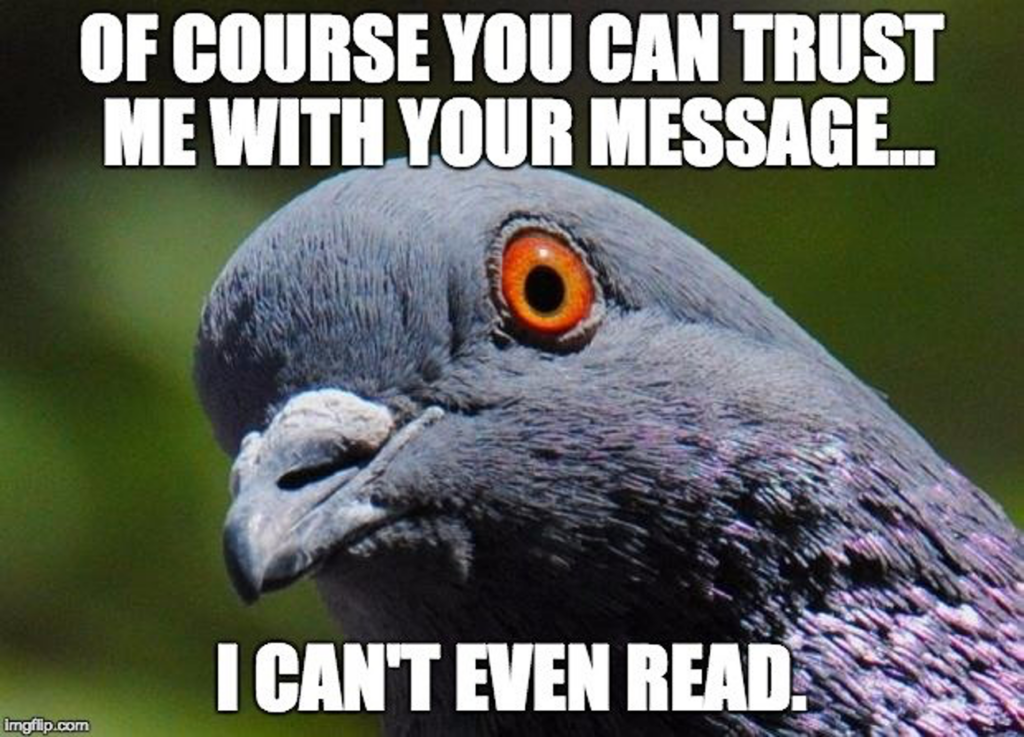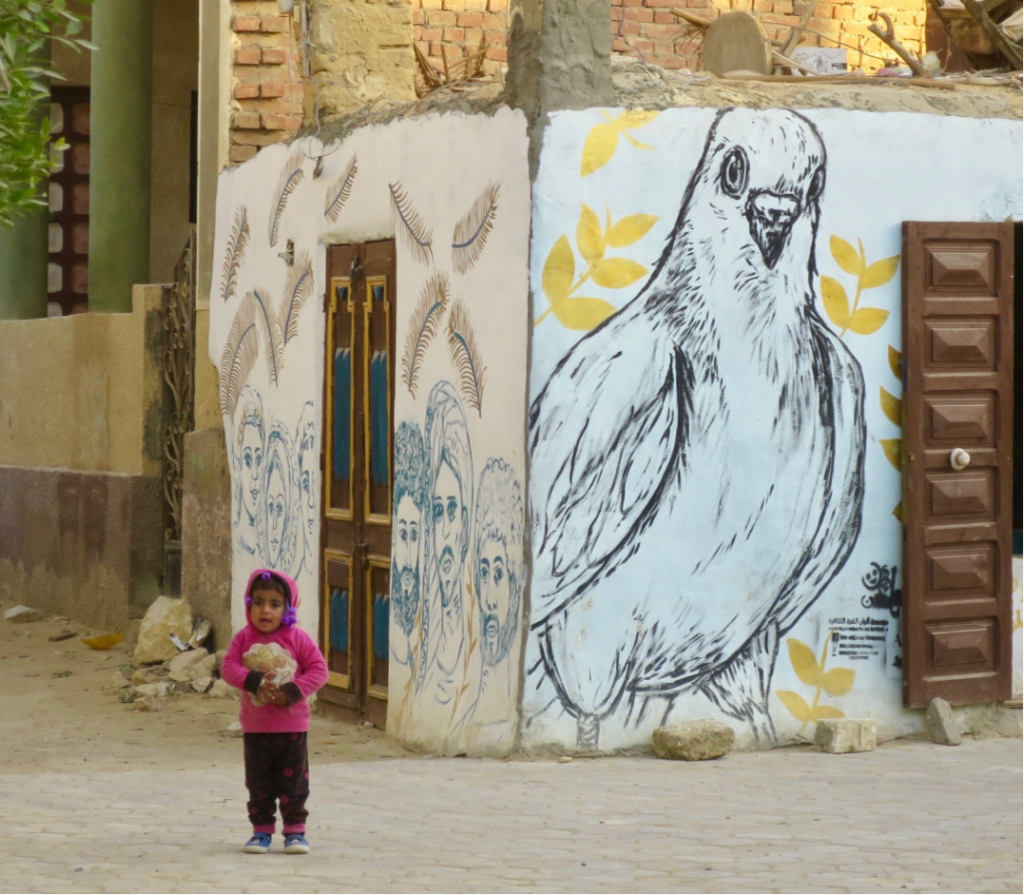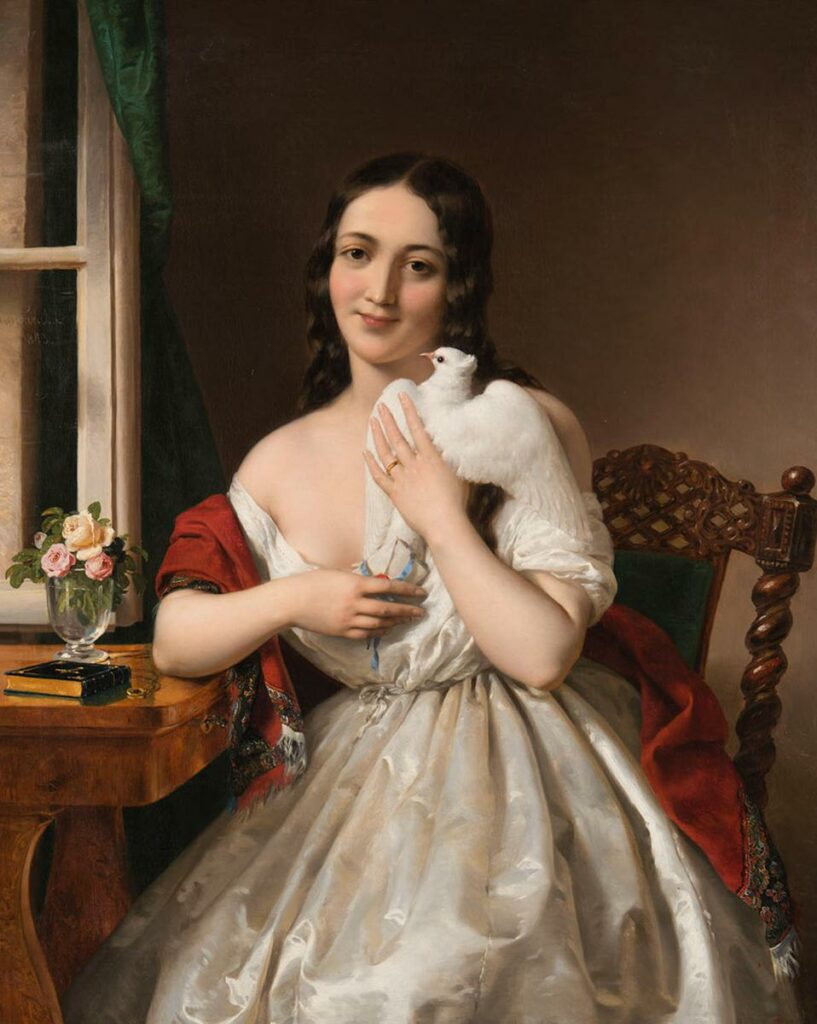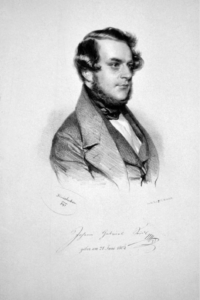Pigeon post
(Poet's title: Die Taubenpost)
Set by Schubert:
D 965A
formerly catalogued as D 957/14[October 1828]
Part of 13 Lieder nach Gedichten von Rellstab und Heine (“Schwanengesang”), D 957
Ich hab eine Brieftaub in meinem Sold,
Die ist gar ergeben und treu;
Sie nimmt mir nie das Ziel zu kurz
Und fliegt auch nie vorbei.
Ich sende sie viel tausendmal
Auf Kundschaft täglich hinaus,
Vorbei an manchem lieben Ort,
Bis zu der Liebsten Haus.
Dort schaut sie zum Fenster heimlich hinein,
Belauscht ihren Blick und Schritt,
Gibt meine Grüße scherzend ab
Und nimmt die ihren mit.
Kein Briefchen brauch’ ich zu schreiben mehr,
Die Träne selbst geb’ ich ihr,
Oh, sie verträgt sie sicher nicht,
Gar eifrig dient sie mir.
Bei Tag, bei Nacht, im Wachen, im Traum,
Ihr gilt das alles gleich,
Wenn sie nur wandern, wandern kann,
Dann ist sie überreich.
Sie wird nicht müd, sie wird nicht matt,
Der Weg ist stets ihr neu,
Sie braucht nicht Lockung, braucht nicht Lohn,
Die Taub’ ist so mir treu.
Drum heg ich sie auch so treu an der Brust,
Versichert des schönsten Gewinns;
Sie heißt: die Sehnsucht – kennt ihr sie? –
Die Botin treuen Sinns.
I have a carrier pigeon working for me,
Which is totally devoted and faithful,
It never comes short of the destination for me
Nor does it ever fly beyond it.
I send it many thousands of times
A day, off on reconnaissance missions,
Past many a dear spot
Until it comes to my beloved’s house.
There it looks through the window secretly
Observing her glances and listening to her steps,
It jokingly passes on my greetings
And brings hers back with it.
I no longer need to write any notes,
I just give it my tears themselves:
Oh it will definitely not lose those,
So eagerly does it serve me.
During the day, at night, awake, dreaming,
It does not matter:
So long as it is travelling, that it is able to travel,
Then it has riches aplenty!
It does not become tired, it does not become faint,
The route is always new to it;
It does not need bribes, it does not need wages,
That pigeon is so faithful to me!
In return I therefore cherish it faithfully at my breast,
Assuring it of the finest reward;
It is called – longing! Do you know it?
The messenger of the most faithful devotion.
All translations into English that appear on this website, unless otherwise stated, are by Malcolm Wren. You are free to use them on condition that you acknowledge Malcolm Wren as the translator and schubertsong.uk as the source. Unless otherwise stated, the comments and essays that appear after the texts and translations are by Malcolm Wren and are © Copyright.
☙
Themes and images in this text:
Chest / breast Doves and pigeons Flying, soaring and gliding Greetings Houses Letters and correspondence Longing and yearning Tears and crying Windows
Let us be clear: there is no pigeon. The bird is there to convey the message which would otherwise never be delivered (or even sent). It is what some theorists of metaphor call a ‘vehicle’, carrying the more significant but much more elusive ‘tenor’. The poet attempts to specify this at the end of the text, using the slippery term ‘longing’ or ‘yearning’ (die Sehnsucht), but we suspect that there is also an element of obsession and fixation. The poet lets some of this slip when he admits that the pigeon peeps in at the beloved’s window ‘secretly’ or ‘furtively’. Its arrival might not always be totally welcome if noticed by the girl.
Aristotle provided a formula for creating metaphors which pointed to something inherent in all kinds of comparison. He proposed a ratio (análgon) of the type A is to B, as X is to Y, exemplified as Life is to old age, as day is to evening. This ratio demonstrated that life and day can come together because of a third shared factor, time. He then switched the second terms to get A is to Y, as X is to B, producing: Life is to evening, as day is to old age. Such a cross-over creates such phrases as the evening of life and day's old age (Poetics, 31.11). Here, terms from distinct contexts are first aligned, then spliced, demonstrating the close relationship between metaphor and analogy. In 1936, the English critic I. A. Richards provided labels for the three aspects of metaphor implied by Aristotle: the original context or idea is the tenor of the metaphor, the borrowed idea is the vehicle, and the shared element the ground. In Aristotle's example, life is the tenor, day the vehicle, time the ground. Commentators, however, are not usually precise about where the metaphor proper resides: it is sometimes defined as the vehicle alone, sometimes as the combination of tenor and vehicle, and sometimes as tenor, vehicle and ground together. Tom McArthur, 'Metaphor' in The Oxford Companion to the English Language Oxford University Press 1992 page 653
There IS an exchange of messages, he insists, but there is something strange about the tone, which is joking or playful (flirtatious clearly). The undoubted depth of the longing cannot be conveyed in this way. All that is sent in return is her greetings, which might be no more than a polite acknowledgement. Stanza four confirms what we are beginning to suspect: that his feelings cannot be contained in the messages he wants to send. His tears overwhelm him. He has realised that his tweets are inadequate: he has been signalling his meaning but there is no genuine interaction.
He comes to realise that she is distant. This is the underlying metaphor of the text, what theoreticians would call the ‘ground’ which links the ‘vehicle’ and the ‘tenor’. He has enjoyed playing with the idea of physical distance, pretending that his thoughts are reaching the distant beloved as efficiently as if carried on wings of song, but he is unprepared for her emotional distance. Is there still a chance that his embassy will be successful and that her apparent indifference is her way of signalling the depths of her own passion? Just as a pigeon cannot read the message it is carrying, this man’s longing might be getting in the way of him understanding what is going on.
☙
The true messenger pigeon is a variety of domestic pigeons (Columba livia domestica) derived from the wild rock dove, selectively bred for its ability to find its way home over extremely long distances. The rock dove has an innate homing ability, meaning that it will generally return to its nest (it is believed) using magnetoreception. Flights as long as 1,800 km (1,100 miles) have been recorded by birds in competitive pigeon racing. Their average flying speed over moderate 965 km (600 miles) distances is around 97 km/h (60 miles per hour) and speeds of up to 160 km/h (100 miles per hour) have been observed in top racers for short distances. Because of this skill, domesticated pigeons were used to carry messages as messenger pigeons. They are usually referred to as "pigeon post" if used in post service, or "war pigeon" during wars. Until the introduction of telephones, homing pigeons were used commercially to deliver communication. Messenger pigeons are often incorrectly categorized as English carrier pigeons, an ancient breed of fancy pigeons. They were used historically to send messages but lost the homing instinct long ago. Modern-day homing pigeons (homers) or racing pigeons (racing homers) do have "Carrier blood" in them because they are in part descendants of the old-style Carriers. This is one reason why they are still commonly but erroneously called "carrier pigeons". https://en.wikipedia.org/wiki/Homing_pigeon retrieved 3rd July 2020
Genesis 8:6-12 King James Version (KJV) 6 And it came to pass at the end of forty days, that Noah opened the window of the ark which he had made: 7 And he sent forth a raven, which went forth to and fro, until the waters were dried up from off the earth. 8 Also he sent forth a dove from him, to see if the waters were abated from off the face of the ground; 9 But the dove found no rest for the sole of her foot, and she returned unto him into the ark, for the waters were on the face of the whole earth: then he put forth his hand, and took her, and pulled her in unto him into the ark. 10 And he stayed yet other seven days; and again he sent forth the dove out of the ark; 11 And the dove came in to him in the evening; and, lo, in her mouth was an olive leaf pluckt off: so Noah knew that the waters were abated from off the earth. 12 And he stayed yet other seven days; and sent forth the dove; which returned not again unto him any more.
Pigeons have acted as messengers in affairs of importance. During the siege of Mutina, Decimus Brutus, who was in the town, sent despatches to the camp of the consuls1 fastened to pigeons' feet. Of what use to Antony then were his intrenchments, and all the vigilance of the be- sieging army? his nets, too, which he had spread in the river, while the messenger of the besieged was cleaving the air? Many persons have quite a mania for pigeons—Building towns for them on the top of their roofs, and taking a pleasure in relating the pedigree and noble origin of each. Of this there is an ancient instance that is very remarkable; L. Axius, a Roman of the equestrian order, shortly before the Civil War of Pompeius, sold a single pair for four hundred denarii, as we learn from the writings of M. Varro.2 Countries even have gained renown for their pigeons; it is thought that those of Campania attain the largest size. 1 Hirtius and Pansa. Frontinus, B. iii. c. 13, says that pigeons were sent by Hirtius to Brutus. At the present day, letters are sent fastened under their wings. 2 B. iii. c. 7. Pliny the Elder, The Natural History. 10.53 (published 77 CE) English translation, John Bostock, M.D., F.R.S. H.T. Riley, Esq., B.A. London. Taylor and Francis, Red Lion Court, Fleet Street. 1855.

Pigeon Expresses. Advantage has been taken, from the earliest ages, of strong, sustained, and rapid flight of various species of the Turkish Pigeon, to employ it in the conveyance of information between distant points. Thus, in the antique sculptures, we see the birds, in pairs, yoked to the chariots of angelic couriers; in the early histories of romance, we read of pigeons being used to convey the welcome intelligence of succour and relief to besieged cities, of battles lost or won; and in poetry and tales of the East, they are frequently described as carriers of lover’s vows. At the present day, when a utilitarian sprit gives character to the age, they are employed in all cases where extraordinary dispatch is required; and in Holland, France and our own country, very expensive establishments are maintained for breeding, training, and dispatching them. The great use of a pigeon express is found in forwarding intelligence from Paris to London, by way of Boulogne and Folkstone, and on that line of flight the system may be studied by the curious with advantage. The principle on which the whole business proceeds, is found in the singular attachment shown by the pigeon for the place of its birth; for that loved spot, the bold carrier, urged by an irresistible instinct, will wing his way back from a distance, even though he should have been born, from his home the space of many miles. Upon such occasions, the bird, on being set at liberty, soars at once to a high altitude by a spiral series of evolutions, and then, as if it saw its birth-place – the old familiar nook – it darts off with immense velocity, and pursues a course so true, that neither the direction of a compass nor the dictates of experience could devise a better. In this way, the pigeon bred at Folkstone, flies with his despatch from Boulogne to Folkstone; the native of Sittingbourne, from Folkstone to Sittingbourne; the “carrier ” of Gravesend, from Sittingbourne to Gravesend; and the prime game bird of the metropolis, from Gravesend to London; completing the entire journey, from the coast of France to the British capital, in about one hour and a half. At the places here mentioned, establishments are kept by the London stockbrokers, to convey to their several coteries the price and circumstances of foreign stocks. The despatch is usually written in symbols, on a strip of oiled French tissue paper, and wound tightly round a leg of the bird. In this position it is not visible to a spectator, and has the further advantage of not impeding the flight. Before starting, the bird is kept for some time without food, and is fed immediately on reaching his station. In training them for the channel passage, short distances are first tried; and a despatch journey is not ventured till many preliminary ones have been accomplished. The Illustrated London News, 31st May 1845
"The pigeon was arrested after it flew from Pakistan into a woman's house near the border," Kathua police superintendent Shailendra Mishra told reporters in Manyari (on the Indian-controlled side of the Kashmiri border). "A ring was seen attached to one of its legs, with some numbers on it. Some called it a coded message, but we can't say whether the pigeon was being used for spying. We have handed it to our security agencies, who are trying to decipher the message. Further investigation is underway." Meanwhile, in the Punjabi town of Shakar Garh, the pigeon's owner expressed concern and bemusement. "I have almost 250 pigeons, and have been keeping them for the past thirty years. On Eid day, I sent 12 pigeons by rail across the border, where they were released. All of them flew home, except for Golden Madi. Then came news that a pigeon had been arrested by Indian forces. All the authorities there have to do is add the Pakistan dialling code before the numbers on the so-called coded message, and they can phone me and talk about it. Nobody has contacted me, but all I want is for India to return my pigeon with respect. I want Golden Madi back, so she can participate in a pigeon competition next Thursday." Outlook India, 29/5/20. Spotted for Private Eye (3/7/20) by Helen Armstrong
Why Is Twitter A One-Way Broadcast Medium? Posted on April 29, 2020 by Robert Bacal Twitter as a broadcast, one way medium What Are The Implications Of People Using Twitter As A Broadcast One-Way Medium? ALL of the research suggests that contrary to all the expert advice on Twitter, companies and individuals use Twitter as a one-way communication method; in short a broadcast medium. There is very little two way communication or conversation that goes on, and the research findings are both consistent and reliable on that point. What Does It Mean? It means that both companies and individuals use a medium in a way that makes sense to them, taking into account the features and limitations of the medium. So, if you want to understand how a particular medium works, don’t listen to experts — look at how people actually use it. It’s clear that the limitations on Twitter (and there are many) push users into broadcasting, rather than conversing. There are exceptions, of course, but the overwhelming majority of tweets are one-offs that receive NO response. In a sense, the users know something the experts don’t; that Twitter doesn’t work well as a platform for conversations. http://customerservicezone.com/why-is-twitter-a-one-way-broadcast-medium/

Photo: Malcolm Wren
Updated by: 2549, 6214 EXPERIMENTAL
Errata Exist
Network Working Group D. Waitzman
Request for Comments: 1149 BBN STC
1 April 1990
A Standard for the Transmission of IP Datagrams on Avian Carriers
Status of this Memo
This memo describes an experimental method for the encapsulation of
IP datagrams in avian carriers. This specification is primarily
useful in Metropolitan Area Networks. This is an experimental, not
recommended standard. Distribution of this memo is unlimited.
Overview and Rational
Avian carriers can provide high delay, low throughput, and low
altitude service. The connection topology is limited to a single
point-to-point path for each carrier, used with standard carriers,
but many carriers can be used without significant interference with
each other, outside of early spring. This is because of the 3D ether
space available to the carriers, in contrast to the 1D ether used by
IEEE802.3. The carriers have an intrinsic collision avoidance
system, which increases availability. Unlike some network
technologies, such as packet radio, communication is not limited to
line-of-sight distance. Connection oriented service is available in
some cities, usually based upon a central hub topology.
Frame Format
The IP datagram is printed, on a small scroll of paper, in
hexadecimal, with each octet separated by whitestuff and blackstuff.
The scroll of paper is wrapped around one leg of the avian carrier.
A band of duct tape is used to secure the datagram's edges. The
bandwidth is limited to the leg length. The MTU is variable, and
paradoxically, generally increases with increased carrier age. A
typical MTU is 256 milligrams. Some datagram padding may be needed.
Upon receipt, the duct tape is removed and the paper copy of the
datagram is optically scanned into a electronically transmittable
form.
Discussion
Multiple types of service can be provided with a prioritized pecking
order. An additional property is built-in worm detection and
eradication. Because IP only guarantees best effort delivery, loss
of a carrier can be tolerated. With time, the carriers are self-
regenerating. While broadcasting is not specified, storms can cause
data loss. There is persistent delivery retry, until the carrier
drops. Audit trails are automatically generated, and can often be
found on logs and cable trays.
Security Considerations
Security is not generally a problem in normal operation, but special
measures must be taken (such as data encryption) when avian carriers
are used in a tactical environment.
Author's Address
David Waitzman
BBN Systems and Technologies Corporation
BBN Labs Division
10 Moulton Street
Cambridge, MA 02238
Phone: (617) 873-4323
EMail: dwaitzman@BBN.COM
https://tools.ietf.org/html/rfc1149
☙
Original Spelling and note on the text Die Taubenpost Ich hab' eine Brieftaub' in meinem Sold, Die ist gar ergeben und treu, Sie nimmt mir nie das Ziel zu kurz, Und fliegt auch nie vorbei. Ich sende sie vieltausendmal Auf Kundschaft täglich hinaus, Vorbei an manchem lieben Ort, Bis zu der Liebsten Haus. Dort schaut sie zum Fenster heimlich hinein, Belauscht ihren Blick und Schritt, Gibt meine Grüße scherzend ab Und nimmt die ihren mit. Kein Briefchen brauch' ich zu schreiben mehr, Die Thräne selbst geb' ich ihr: O sie verträgt sie sicher nicht, Gar eifrig dient sie mir. Bei Tag, bei Nacht, im Wachen, im Traum1, Ihr gilt das alles gleich: Wenn sie nur wandern, wandern kann, Dann ist sie überreich! Sie wird nicht müd, sie wird nicht matt, Der Weg ist stets ihr neu; Sie braucht nicht Lockung, braucht nicht Lohn, D i e Taub' ist so mir treu! Drum heg' ich sie auch so treu an der Brust, Versichert des schönsten Gewinns; Sie heißt - die Sehnsucht! Kennt ihr sie? - Die Botin treuen Sinns. 1 Schubert changed 'im Wachen und Traum' to 'im Wachen, im Traum'
Confirmed by Peter Rastl with Natur und Herz. (Lyrische Nachlese.) Von Johann Gabriel Seidl. Stuttgart. Druck und Verlag von Eduard Hallberger. 1853, pages 209-210; and with Joh. Gabr. Seidl’s gesammelte Schriften. Mit einer Einleitung von Julius von der Traun. Herausgegeben von Hans Max. Vierter Band. Almer. – Natur und Herz. Wien, 1879. Wilhelm Braumüller k.k. Hof- und Universitätsbuchhändler, pages 338-339.
To see an early edition of the text, go to page 209 [225 von 426] here: http://digital.onb.ac.at/OnbViewer/viewer.faces?doc=ABO_%2BZ164190401



